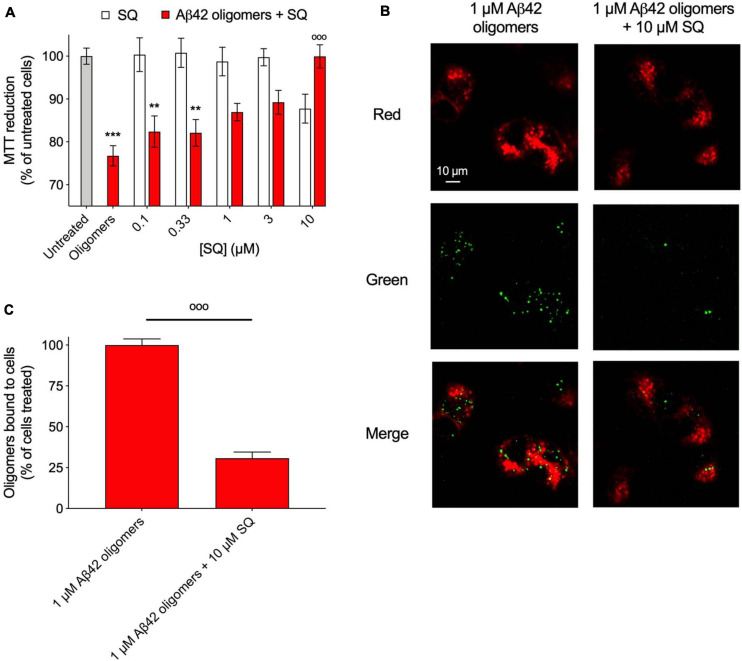FIGURE 6.
Squalamine suppresses the toxicity associated with Aβ42 oligomeric species to neuroblastoma cells. (A) Aβ-derived diffusible ligands (ADDLs) of Aβ42 (denoted Aβ42 oligomers) were resuspended in cell culture medium at a concentration of 1 μM (in monomer equivalents) and incubated with or without increasing concentrations (0.1, 0.33, 1, 3, and 10 μM) of SQ (red bars) for 1 h at 37°C and then added to the cell culture medium of SH-SY5Y cells for 24 h. The cells were also treated with the same concentrations of SQ pre-incubated in the absence of oligomers for 1 h at 37°C (white bars). (B) Representative confocal scanning microscopy images of the apical planes of cells treated for 15 min with Aβ42 oligomers (1 μM in monomer equivalents) in the absence or presence of 10 μM SQ. Red and green fluorescence indicates the cell membranes and the Aβ42 oligomers, respectively. Scale bar = 10 μm. (C) The histogram shows the percentage of colocalization on regions of interest (12–22 cells). In all panels, data represent mean ± s.e.m. of three independent experiments, the symbols ** and *** indicate p < 0.01 and 0.001, respectively, relative to untreated cells, and the symbol °°° indicates p < 0.001 relative to cells treated with oligomers. 3-(4,5-Dimethylthiazol-2-yl)-2,5-diphenyltetrazolium bromide (MTT) data were analyzed by one-way ANOVA followed by Bonferroni’s post comparison test. Cell binding data were analyzed using an unpaired, two-tailed Student’s t-test.

